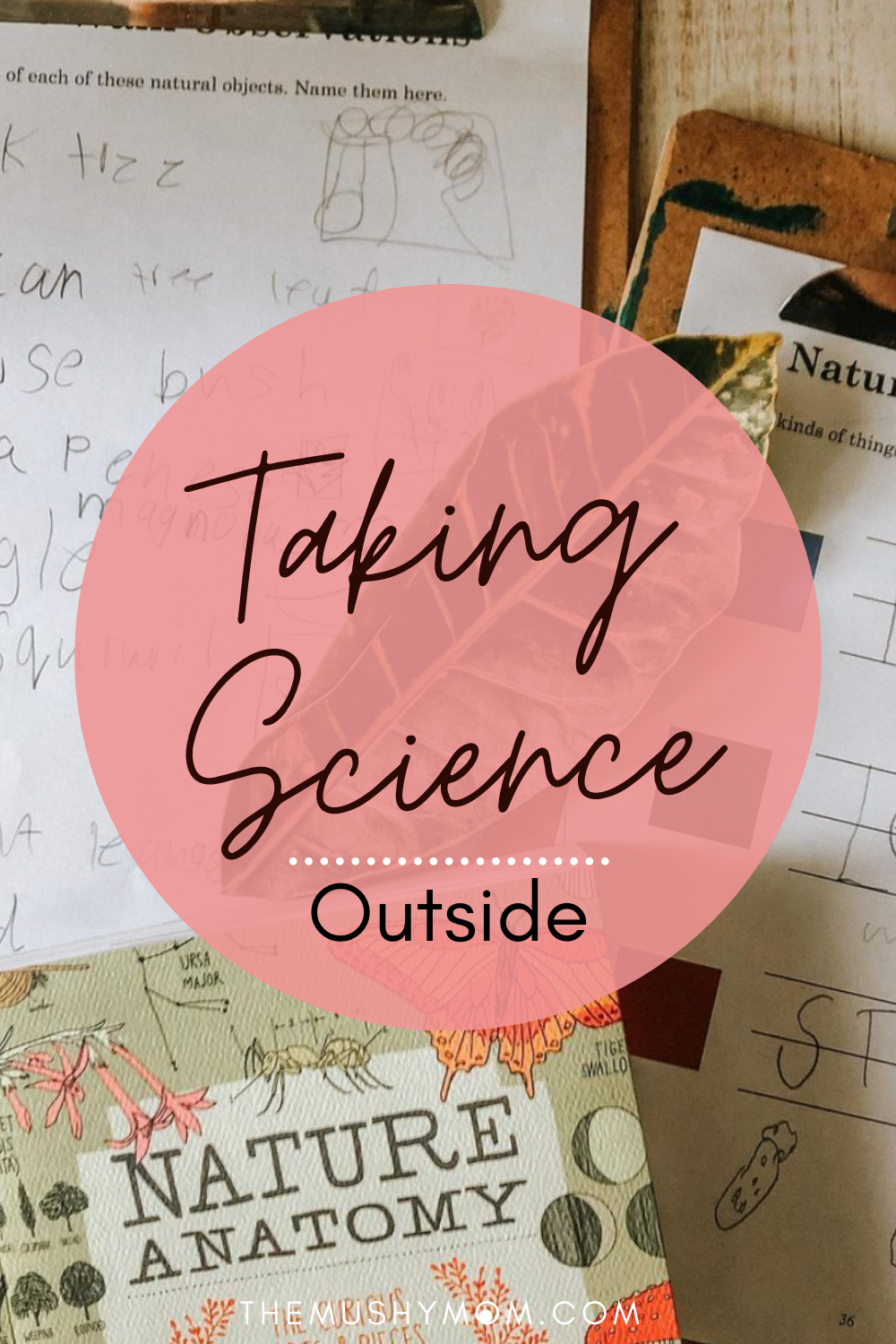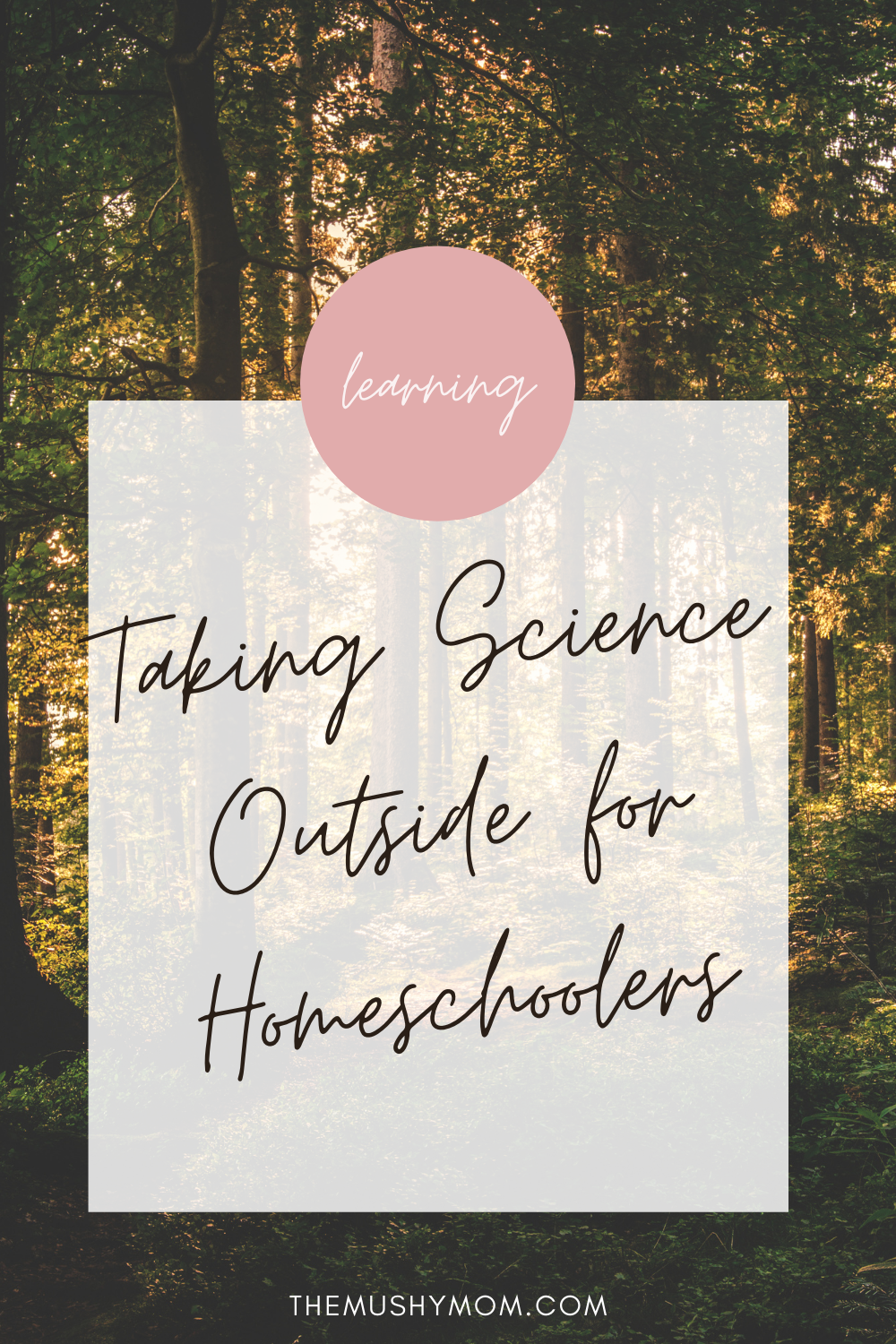8 Ways to Take Science Outside
What does science look like in your homeschool? Our children didn’t do a rigid or fancy science curriculum this year since they are on the younger side. We kept it simple with plant based experiments and nature based books - something that we all enjoyed.
This year we worked in nature journals (although I’m on the hunt for a better one next year) and we did lots of outside work. It’s easy to have children take science outside because most children generally rather be outside anyway.
If you’re homeschooling little ones, I say take the pressure off to order a fancy science curriculum and instead order a good nature journal. Make science come alive outside in nature!
8 Ways to Take Science Outside
We love the Nature Anatomy book
Nature Journaling. We love taking our nature journals outside and hunting for our favorite thing we see. Each child is given a sheet to draw, color and explain something that they found outside that day. Not only does this helps us learn more about plant life, bugs, etc… but we also get to practice our art for the day. It’s like two birds with one stone!
Scavenger hunt. We actually haven’t done this enough but it’s so fun and great for the kids. Give them a simple hunt to look for items of a specific color that they then have to journal once they gather them. Or search for a fun scavenger hunt that can be specific to your season or location.
Grow a garden and journal it. Again, this is something that is super easy and all about the journaling. Even if you don’t have a large garden, plant one pot of cherry tomatoes, one flower from a seed, or even sprout red beans in a cup for your children to journal the changes over time. This allows them to notice and discuss plant growth and become familiar with the plant life cycle.
Think beyond the plants. Grab a cup of soil and study the layers of soil with it. Go collect rocks and have a lesson on the different rock forms. Send your children out with a bug book and see how many bugs they can find. With all of these things, they can return and nature journal it for themselves and for an assignment.
Turn nature into art. Again you get to combine art and science by having your child gather items from nature and creating a picture solely from those items. Give them only one pencil or one marker and then allow them to create a masterpiece with the items that they find. Use a large roll of craft paper or art paper for this.
Discover what melts outside. Fill a muffin tray up with various items. You can use ice cubes, a crayon, a lego, a chocolate candy, a small toy, a cookie, etc… and talk about heat, melting and even a solid to a liquid.
Sink or float. Fill a big container, small pool or steel tub up with water and gather things from nature to see which will float or sink. Have the kids write their hypotheses down in a journal and teach them about hypothesis, sinking, floating and density.
Build a bird’s nest or animal den. Have the kids use items from nature to make their own bird’s nest or animal den. Have them draw a picture in their nature journal or sketch it for an art assignment. This is great to pair with any read aloud on animal habitats.
It’s always helpful to bring your read aloud books alive by thinking of ways to get the children outside to discover, reenact, draw, hunt or create something from nature to mimic something from their story. This is an excellent way to work on reading comprehension, story telling, art, science and more!
Cheers to lots of outside play this summer and some great nature journaling. Come back soon to see more about our nature journals.
Plant a garden with your children.
Find a great place to hike!
Nature journaling can also double up as ART since often times your child will draw what they find.





